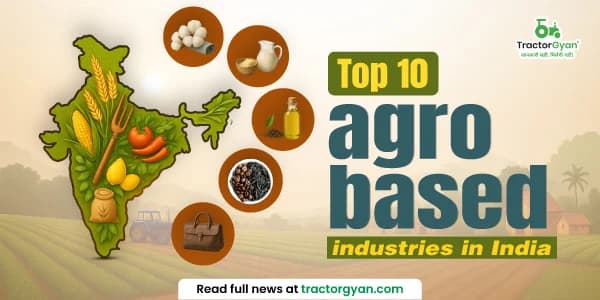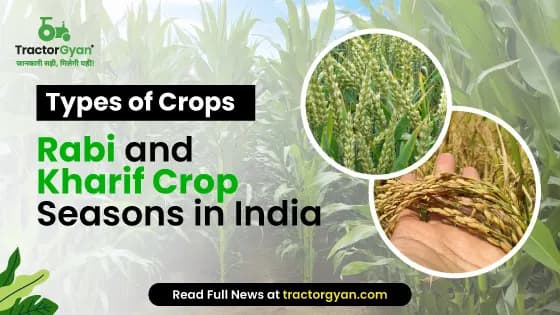Agroforestry: Know about benefits from Agroforestry and National Agroforestry Policy.
How farmers take the benefits from Agroforestry?
Agroforestry is a form of land use management where trees or shrubs are cultivated next to or amid pastureland or crops. Fruits and nuts, pharmaceuticals, wood products, and a variety of other valuable and marketable goods are all produced by trees.
Higher yields from staple food crops, improved farmer lives due to income production, increased biodiversity, improved soil structure and health, reduced erosion, and carbon sequestration are just a few advantages of this purposeful agriculture and forestry.
The concepts of agroforestry are like those of intercropping, but they can also apply to far more complicated multi-strata agroforests with hundreds of species. To replenish the nitrogen fertility of the soil, agroforestry can also make use of nitrogen-fixing plants like legumes. Planting the nitrogen-fixing plants sequentially or simultaneously is an option.
Know more about Agroforestry
An ecologically sound land use system called agroforestry blends trees, crops, and animals. It incorporates trees and shrubs into rural and agricultural landscapes to increase ecosystem resilience, diversity, and profitability.
Agroforestry proves to be dynamic economically and natural resources management based that integrates the agricultural farmlands or landscape which further diversifies to sustain and maintain the production to build social institutions.
How has India Adopted Agroforestry?

1. In 2014, India became the very first country to adopt the policy of agroforestry. The National Agroforestry Policy NAP aims to promote and provide an increase in employment growth rate and productivity, and environmental conservation.
2. With the slogan "Har medh par ped," an under the NAP was started in 2016 with around 1,000 crores to make agroforestry a national initiative (trees on every field boundary).
3. The Indian Finance Minister declared that the government would support agroforestry in the 2022–23 Union Budget.
4. However, the SMAF and Rashtriya Krishi Vikas Yojana were combined by the Ministry of Agriculture and Farmers' Welfare, depriving the agroforestry sector of its premier implementation arm.
What Is the National Agroforestry Policy?
The National Agroforestry Policy of India is a complete set of policies designed to increase agricultural output while enhancing agricultural livelihoods and reducing climate change. At the World Congress on Agroforestry in New Delhi in February 2014, the Indian government unveiled the plan. The first country to adopt an agroforestry policy was India.
Benefits of Agroforestry to Farmers

1. Agroforestry helps in increasing the productivity of the farmers
Trees provide an additional crop that protects the farmer from subpar harvests. If the primary crop fails due to unfavorable conditions like wet summers or mild winters, fruit, nuts, or timber might serve as a backup source of income.
By avoiding the peaks and valleys of seasonal demand, diverse cropping through agroforestry can let farm enterprises function all year long and provide a source of year-round income.
2. More space for wildlife
Wildlife and humans both have a claim to the terrain. Farmers may use the remaining space to plant more trees and hedgerows to provide habitat for wildlife if agroforestry allows them to produce the same amount of food from a smaller field.
Because they serve as a haven for "friendly predators," which fight off some of the pests that would otherwise consume or destroy crops, these additional habitats have even been shown in some studies to aid in pest control.
Agroforestry landscapes also give wildlife a lot of pathways between habitats, which is essential for feeding and breeding.
tg_quick_links
3. Agroforestry helps in economic benefit
Agroforestry systems on cropland/farmland provide the farmer, the community, the area, or the country with major economic benefits. Among these advantages are an increase in and maintenance of food, fuelwood, fodder, fertilizer, and timber outputs; a decrease in the occurrence of total crop failure, which is common in single-cropping or monoculture systems; and an increase in farm income levels because of enhanced and sustained productivity.
4. Improves the condition of the planet
We need to come up with smart solutions that can deliver food from sustainable and resilient sources if we want to feed a growing global population. In the future, when climate change may alter weather patterns and make growth conditions less predictable, this will become increasingly crucial.
To tackle climate change, we must reduce greenhouse gas emissions. Because they remove carbon from the atmosphere and store it safely deep in the soil, trees are a fantastic way to accomplish this. They also recycle nutrients that feed more plants, animals, and fungi, all of which in turn feeds the soil. Moreover, healthy soils have a much greater capacity to store carbon than damaged soils.
Since they already contain all the nutrients farmers require and can replenish themselves organically, healthy soils can help lessen our reliance on chemical fertilizers.
5. Improves the condition of the soil
Agroforestry enhances watersheds and soil health, increasing the resilience of the land. This lessens the negative effects that extreme weather, such as droughts and floods, has on the business. Reduce your risks with agroforestry-based climate adaptation for your farm.
A farmer's most valuable resource is soil. The complex system of organic and inorganic components that makes up soil offers both business and society priceless benefits. The soil food web generates a tremendous amount of value, from carbon and water storage to nutrient cycles. The fungus and microorganisms in the soil have a special relationship with trees and plants.
6. Increased Biodiversity
The disappearance of biodiversity is the unspoken tragedy of our time. Agroforestry enhances the system's biodiversity. This could improve natural pest control or assist in creating a habitat for pollinators. Agroforestry enhances the farm's ecosystem services in this way, which helps the business. Furthermore, biodiversity promotes a stronger system that can withstand more severe weather.
7. Water quality
Agroforestry helps farmers by increasing water availability and retention. Additionally, trees and bushes filter out pollutants and nutrients that promote eutrophication and contaminate streams. This guarantees a consistent supply of clean water for the farming industry and society as a whole.
Planting trees beside crops or grazing fields could help us achieve "sustainable intensification" in the future, just as it did in the past. This method can boost crop production while also being good for the environment.
About TractorGyan
Tractor Gyan is an expert-led platform that aims to empower Indian farmers by providing accurate and timely information, and technological advancement about tractors and farm equipment in India.
TractorGyan helps farmers with New Tractor information, Compare Tractors, Tractor prices, Buying and selling of second-hand tractors, Tractor Insurance, Tractor Finance, Tractor tyre, Tractor Implements, Tractor EMI calculator and more.
On our Platform, we have information about leading brands :
- In tractors like Captain, Preet, Farmtrac, Vst shakti
- In Tyres like BKT, Ceat, Apollo etc.
- In Tractor Finance like Mahindra Finance, TVS Finance, Etc.
- In Tractor Implements like Shaktiman, Fieldking, Landforce, KS agrotech, etc.
- In Tractor Insurance like Mahindra Finance, Axis Bank, ICICI Bank, etc.
TractorGyan is Helping India mechanise by delivering crucial information about tractor buying and guiding farmers at every step so that they get a tractor or farm equipment that empowers and equips them to produce quality yield.
कैटेगरी
और ब्लॉग पढ़ें
Agricultural tools are an efficient way to ease the farming process. Various agricultural tools help the farmers to help them in their farming activities and minimize their workloads.
One such effective agricultural tool...
A combine harvester (mini combine harvester) is a complex agricultural machine that operates and functions to cut and threshes grains and several crops. Mini harvesters are used for harvesting, winnowing, and threshing grains like wheat, barley, maize, oats, and rice, as well...
Farming is an integral part or component of the economy and it shapes the livelihood of our country. Livestock farming involves rearing animals and using them for farming and farming businesses.
Livestock farming is a type of farming in which animals are...
इसके बारे में अपनी टिप्पणी लिखें Agroforestry: Know about benefits from Agroforestry and National Agroforestry Policy.
.webp&w=1920&q=75)
ट्रैक्टर और कृषि से जुड़े सबसे अधिक खोजे जाने वाले ब्लॉग्स
30 Jul 2025
30 Jul 2025
29 Jul 2025
08 Sep 2025
03 Jul 2025
30 Jul 2025
30 Jul 2025
30 Jul 2025
29 Jul 2025
30 Jul 2025
29 Sep 2025
31 Jul 2025
30 Jul 2025
31 Jul 2025















.webp&w=2048&q=75)










.webp&w=2048&q=75)
.webp&w=2048&q=75)



























